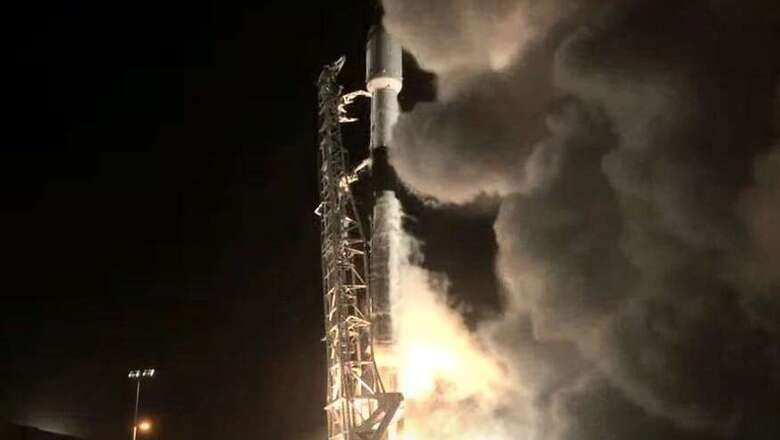
views
SpaceX has pulled off its second launch in five days, successfully deploying 60 satellites into a lower Earth orbit in the wee hours of today. At 6:55AM IST today, a Falcon 9 rocket lifted off from Space Launch Complex 40 of Florida’s Cape Canaveral Air Force Station with 60 Starlink satellites in tow. Some time later, it successfully deployed all of its 60 satellites into the target orbit, and made its way back to Earth before landing on SpaceX’s second drone ship, ‘Just Read The Instructions’. The mission also marked the first time that SpaceX successfully used a Falcon 9 first stage rocket booster for five times, marking yet another achievement in the company’s promise of reusable space missions.
Starlink, brainchild of SpaceX chief Elon Musk, aims to create a string of satellites all around Earth in a bid to beam down internet across all corners of Earth. The project, as per Musk, will make it possible to deploy internet and get connectivity in areas that so far remain extremely difficult or even impossible to reach with optic fibre cables. While the concept of beaming internet down from above isn’t new, what’s novel is Musk’s approach. Once Starlink becomes fully operational, it will reportedly have a string of at least 12,000 satellites, placed in an orbit that is closer to Earth than any other geosynchronous satellite orbit so far. This relatively low altitude, coupled with the large number of relay satellites, will seemingly help beam consistent and widespread internet connectivity all around the world.
Today’s mission was the eighth Starlink satellite deployment mission, each of which has carried 60 satellites into orbit. This brings the total number of Starlink satellites orbiting Earth up to 482, with SpaceX deploying two Starlink satellites as trial after it was cleared for the project by the United States Federal Communications Commission (FCC). So far, US records suggest that about 2,000 satellites are in deployment around Earth, and a total of about 9,000 have so far been launched. This underlines the ambitious scale of the SpaceX Starlink project, although industry viewpoint has been largely bullish on this.
SpaceX is enjoying a lean streak at the moment, after pulling off the first manned commercial spaceflight mission on May 30. NASA astronauts Bob Behnken and Doug Hurley took off and reached the International Space Station (ISS) aboard SpaceX’s manned spacecraft, Crew Dragon, in a launch that was followed with plenty of fanfare all across the world. With the astronauts now in ISS and Crew Dragon docked to the ISS, SpaceX will now be undertaking other missions, until attention is drawn back to the space shuttle’s return back to Earth, which should be any time between one and four months from now.




















Comments
0 comment